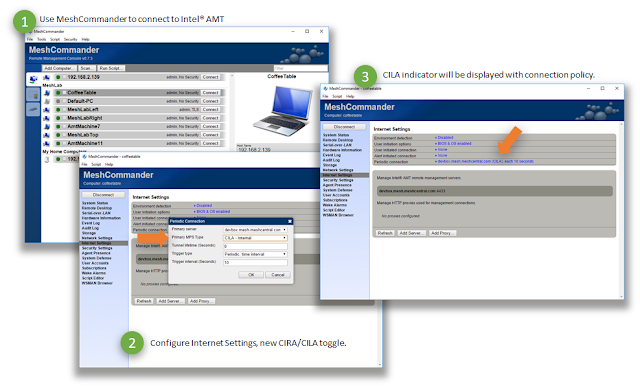MeshCommander 0.7.3 with CILA support

MeshCommander is an open source web-based Intel® AMT management console. It’s a leading edge tool and today, MeshCommander added support for Client Initiated Local Access (CILA) . It's important to be able to remotely manage computers both in software and hardware regardless of where they are connected. Client Initiated Remote Access (CIRA) has been around since Intel® AMT 4.x and provides the way hardware management can connect back to a cloud server. Starting with Intel® AMT 11.6, CIRA is joined by CILA, the local version of the same tunneling system. With CILA, you can now configure Intel® AMT to connect back to a home management server both over the Internet and over the local network . Using a tunneling protocol on the local network means that Intel® AMT is always accurately discovered by the management server. This makes it easy for a server like MeshCentral2 to keep track of all of the Intel® AMT capable devices on a local network. In addition, local management ports (...
